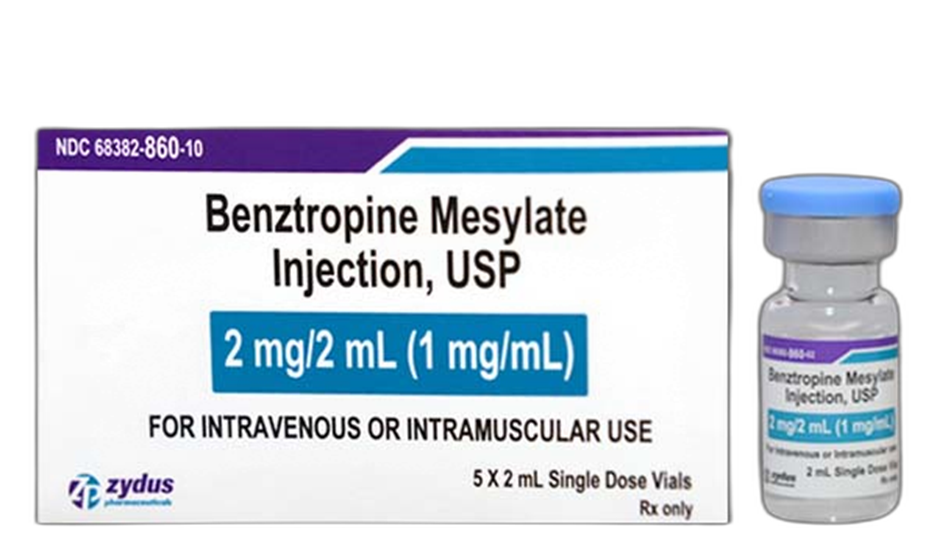A client with psychosis who is receiving an antipsychotic medication is continually rubbing the back of the neck. Which nursing intervention is best for the nurse to implement?
Provide the client a heating pad to place on the neck.
Obtain a prescription for physical therapy services.
Give a PRN prescription for benztropine.
Obtain an extra pillow for the client to use at night.
The Correct Answer is C
Choice A reason: Providing a heating pad to the client may provide some temporary relief, but it does not address the underlying cause of the neck discomfort, which is likely due to extrapyramidal side effects (EPS) of the antipsychotic medication.
Choice B reason: Obtaining a prescription for physical therapy services may be beneficial for the client's overall health and well-being, but it is not the best intervention for the acute problem of neck discomfort. Physical therapy may also require a referral and a waiting period, which would delay the relief for the client.
Choice C reason: Giving a PRN prescription for benztropine is the best intervention for the nurse to implement, as benztropine is an anticholinergic medication that can counteract the EPS of the antipsychotic medication. Benztropine can reduce the muscle stiffness and spasms that cause the neck discomfort.

Choice D reason: Obtaining an extra pillow for the client to use at night may help the client sleep better, but it does not address the neck discomfort during the day. It also does not treat the EPS of the antipsychotic medication, which may worsen over time.
Nursing Test Bank
Naxlex Comprehensive Predictor Exams
Related Questions
Correct Answer is A
Explanation
Choice A reason: Baclofen is a muscle relaxant that can cause drowsiness, dizziness, and orthostatic hypotension. These side effects can increase the risk of falls and injuries for the client. Therefore, the nurse should advise the client to move slowly and cautiously when rising and walking, and to use assistive devices if needed.
Choice B reason: Evaluating muscle strength every 4 hours is not the most important intervention for the nurse to implement, as baclofen does not affect muscle strength directly. It may reduce muscle spasticity and stiffness, but it does not improve muscle function or coordination.
Choice C reason: Monitoring intake and output every 8 hours is not the most important intervention for the nurse to implement, as baclofen does not have a significant effect on fluid balance or renal function. However, the nurse should monitor the client for signs of urinary retention, which is a rare but possible adverse effect of baclofen.
Choice D reason: Ensuring the client knows to stop baclofen before using other antispasmodics is not the most important intervention for the nurse to implement, as baclofen can be used in combination with other antispasmodics under medical supervision. However, the nurse should educate the client about the potential drug interactions and contraindications of baclofen, and to consult the prescriber before taking any new medications.
Correct Answer is D
Explanation
Choice A reason: This is not a correct instruction for the nurse to provide to the client. Stopping the oral contraceptive immediately is not necessary, as it may cause irregular bleeding, hormonal imbalance, or unwanted pregnancy. The client should continue taking the oral contraceptive as prescribed, but use an additional form of contraception, such as condoms or spermicides, while taking erythromycin.
Choice B reason: This is not a correct instruction for the nurse to provide to the client. Avoiding prolonged exposure to direct sunlight is not related to the interaction between oral contraceptive and erythromycin. This instruction may be relevant for other antibiotics, such as tetracyclines or sulfonamides, that can cause photosensitivity and increase the risk of sunburn. The client should protect the skin from sun exposure as part of general health promotion, but it is not specific to erythromycin therapy.
Choice C reason: This is not a correct instruction for the nurse to provide to the client. Taking the medications at least 12 hours apart is not sufficient to prevent the interaction between oral contraceptive and erythromycin. Erythromycin is a macrolide antibiotic that can reduce the effectiveness of oral contraceptive by increasing its metabolism and clearance. The client should take the medications as prescribed, but use an additional form of contraception, such as condoms or spermicides, while taking erythromycin.
Choice D reason: This is the correct instruction for the nurse to provide to the client. Using an additional form of contraception is the best way to prevent pregnancy while taking erythromycin and oral contraceptive. Erythromycin can decrease the efficacy of oral contraceptive by increasing its metabolism and clearance. The client should use a barrier method or a spermicide, in addition to the oral contraceptive, while taking erythromycin and for at least one week after finishing the antibiotic course.
Whether you are a student looking to ace your exams or a practicing nurse seeking to enhance your expertise , our nursing education contents will empower you with the confidence and competence to make a difference in the lives of patients and become a respected leader in the healthcare field.
Visit Naxlex, invest in your future and unlock endless possibilities with our unparalleled nursing education contents today
Report Wrong Answer on the Current Question
Do you disagree with the answer? If yes, what is your expected answer? Explain.
Kindly be descriptive with the issue you are facing.
